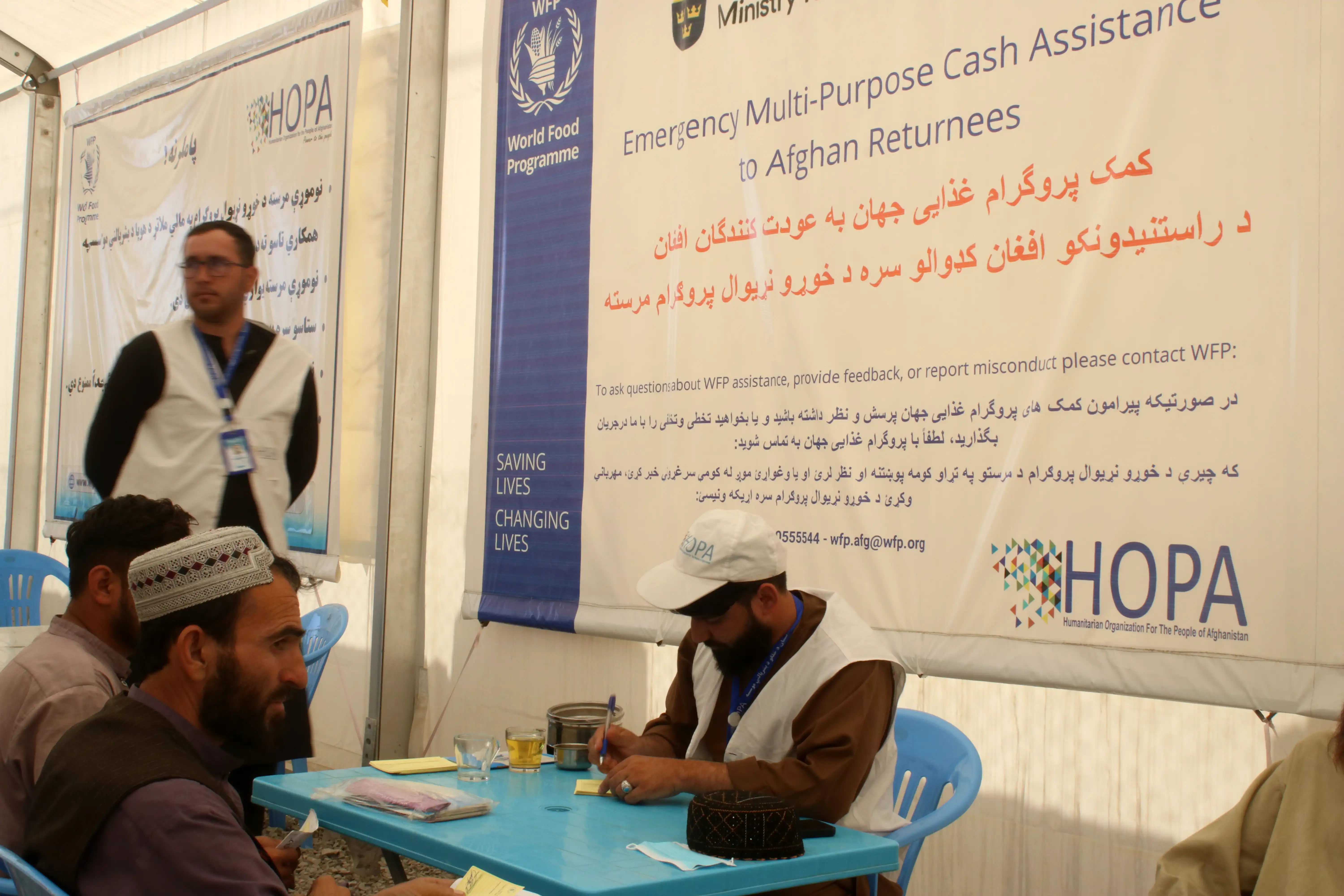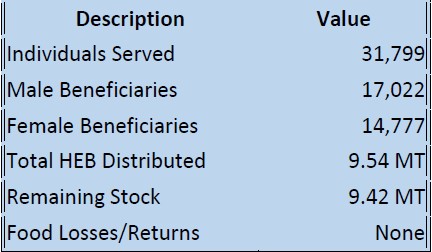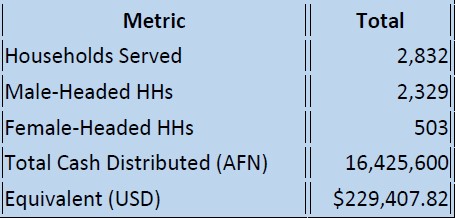
URET Response for Returnees at RC Takhtapul and KTC Kandahar URET Cash and Food Assistance to Returnees in Kandahar Humanitarian Response for Returnees
1. Introduction
In April 2025, the Humanitarian Organization for the People of Afghanistan (HOPA), in partnership with the United Nations World Food Programme (WFP), successfully implemented emergency response to support returnee households crossing the border from Pakistan into Kandahar Province. This initiative—referred to as the URET Response—focused on two critical humanitarian touchpoints:
Reception Center (RC) in Takhtapul District
Kandahar Transit Center (KTC) in PD-5 Kandahar City
Returnees first receive immediate food and nutrition assistance (High Energy Biscuits) at RC, and are then referred to KTC for SCOPE biometric registration and one-time cash assistance of AFN 5,800 per household.
The project aimed to uphold dignity, efficiency, and protection for the returnees by providing timely assistance in a coordinated, transparent, and gender-sensitive manner.
2. General Project Overview
3. Reception Center (RC) – Immediate Food Assistance
3.1 Flow of Activities
1. Returnees arrive via Spin Boldak border point.
2. Screened by border officials and IOM/UNHCR.
3. Referred to RC in Takhtapul where they receive 300g of HEB per person.
4. Brief orientation is provided on next steps (registration, KTC).
3.2 Key Distribution Figures

Separate collection points for male and female returnees were established with clear signage and queue dividers.
Shade tents, water points, and information boards were in place.
All distributions were documented using manual tally sheets and verified through visual counts.
WFP TPM teams were regularly present, observing distribution processes and interviewing beneficiaries.
4. Kandahar Transit Center (KTC) – Cash Assistance
4.1 SCOPE Registration and Cash Distribution Flow
1. Returnees arriving from RC were registered at KTC via WFP’s SCOPE biometric platform.
2. Verified HHs received AFN 5,800 in unconditional cash support via voucher exchange.
3. Each transaction was logged, signed, and receipts were issued.
Description Value Individuals Served 31,799 Male Beneficiaries 17,022 Female Beneficiaries 14,777 Total HEB Distributed 9.54 MT Remaining Stock 9.42 MT Food Losses/Returns None
4.2 Distribution Figures
4.3 Daily Household Distribution Summary

5.1 Gender-Sensitive Arrangements
Separate queues, shaded seating, and service points for men and women.
Female staff managed interactions with women beneficiaries.
Priority access was given to female-headed households, persons with disabilities, and the elderly.
5.2 Accountability to Affected Populations (AAP)
AAP messages were communicated via posters, megaphones, and staff orientations.
Feedback desks with dedicated male and female focal points were operational.
Suggestion boxes and direct feedback lines were available at both RC and KTC.
5.3 Data Protection and Registration Integrity
SCOPE biometric registration was used at KTC to prevent duplication and ensure data security.
No known registration issues or data breaches occurred during this cycle.
6. Monitoring
TPM teams from WFP were present across multiple days.
Key findings:
o High levels of transparency and beneficiary satisfaction.
o Timely distributions and effective crowd management.
o Positive feedback from female beneficiaries about dignified service delivery.
7. Operational Observations and Good Practices
Crowd Management: Roped queues, clear markings, minimized delays or disorder.
Visibility: WFP and HOPA banners, staff IDs, and signboards ensured easy navigation and trust.
Staff Conduct: All field staff were respectful, responsive, and received positive feedback from returnees.
Inter-agency Coordination: Close collaboration with UNHCR, IOM, MoRR, and local authorities ensured smooth beneficiary flow and referral from RC to KTC.
8. Challenges and Mitigation

1. Establish Pre-Arrival Alerts: Strengthen coordination with border agencies to anticipate large influx days.
2. Introduce Mobile Help Desks: Deploy flexible staff to roam queues and resolve issues on the spot.
3. Add Temporary Shelters: For children and mothers during long wait periods.
4. Introduce Token System: To manage flow during peak hours and reduce waiting time confusion.
10. Conclusion
The April 2025 URET Response delivered by HOPA, in partnership with WFP, reached over 31,799 returnee individuals with food assistance at RC, and 2,832 households with cash assistance at KTC. The activity was implemented in full compliance with WFP standards and demonstrated strong practices in protection, gender inclusion, transparency, and community engagement.
With efficient systems, collaborative coordination, and positive TPM feedback, this cycle has reinforced HOPA’s commitment to upholding the dignity and rights of returnees during their most vulnerable moments.





